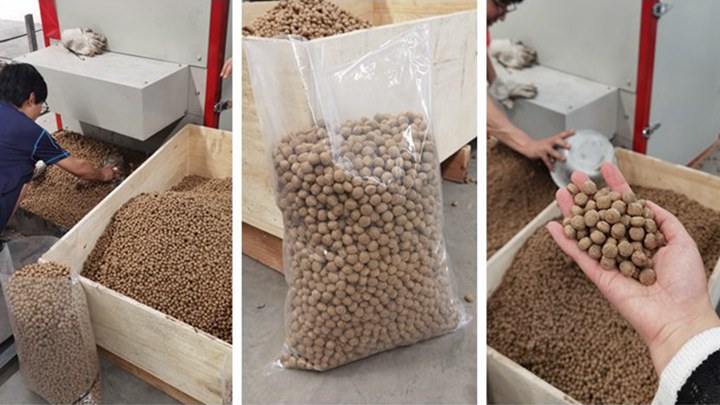.jpg)
Sep 09, 2021 · What is the growth potential for a fish farm? Fish as a food source is growing in popularity. Fish farms for commercial output are replacing some of the land once used for traditional plant crops. For aquarium enthusiasts, the desire for new and unique, as well as healthy, species is always strong.

Oct 15, 2019 · This is to help encourage more rapid recovery of plant life. Turf can be used in the same way and can be helpful later on in the process to cover your liner edge.”. Follow more fish farming tips here to help establish your pond. 6. Oxygen. “All fish require oxygen, as air passes across the water, oxygen is infused.

Advantages of Fish Farming. The farmed fish provides high quality protein for human consumption. Fish farming can be integrated into the existing farm to create additional income and improve its water management. The farmers can select the fish species with desired characteristics to raise. Fish in a pond are not accessible to everyone.

You could start an indoor fish farming business from your backyard, in a fish container, with as little capital as required. Benefits of Fish Farming Business. Now let us take a look at the benefits of the fish farming business. Of all the various food production sectors, the fish farming business ranks among the fastest-growing ones.

May 14, 2021 · Put simply, fish farming is the commercial production of fish in a controlled environment. The idea behind fish farming is to raise fish that can then be sold as food rather than counting on fishers to supply the entire world’s population with wild-caught seafood. Photo Courtesy: alvarez/Getty Images
.jpg)
Apr 13, 2016 · Over 50 percent of the world’s fish oil is used in feed for farmed salmon. This is one reason that fish farming has a reputation as being unsustainable. In 1997, it took almost 3 tons of forage fish to produce one ton of salmon. A third of the global fish harvest still goes toward making fish meal and fish oil.
.jpg)
How it’s managed varies across provinces and territories. Across Canada, fish farming is managed sustainably under the Fisheries Act. Federal partners work together to make sure fish are healthy and safe to eat. Monitoring and ensuring the safety and quality of fish harvested and sold in Canada and international markets. See full list on dfo-mpo.gc.ca
.jpg)
As a result, Canadian salmon farmers now use less than 30% fish meal and oil in their feed. That means only 0.4 kg of wild fish meal and oil are needed to grow 1 kg of farmed salmon. Where possible, the alternative feed ingredients are sourced locally. Farmed salmon convert feed into their muscles, fat and bones very efficiently.

This video is for Edexcel IGCSE Biology 9-1 but is relevant for many GCSE Biology courses. It covers the following objectives from the syllabus 5.9B Understa
.jpg)
2. Add the Water and Begin Building Your Ecosystem. You need to follow the steps mentioned above when adding the water and building your own ecosystem (if you choose that route.) Honestly, if you are looking for an easy way to raise fish then you might actually prefer to just feed them store-bought food.
.jpg)
At least 15 species are being farmed in Canada today: fin fish such as salmon, trout and halibut are popular, as are crustaceans such as mussels and oysters. Although the main export market is the United States, Canadian-farmed fish is also sold to France, Taiwan and Japan, among other countries. Chemical Fish

Jan 06, 2022 · Carnivorous fish — trout, salmon and striped bass — occupy a higher place on the food chain. It takes 3 to 5 pounds of wild-caught fish to make enough fish meal for pellets that will produce 1
.jpg)
There are over 70 aquatic species licensed for farming in Atlantic Canada. According to Statistics Canada (2010), the bulk of the production value is made up of Atlantic salmon (85%), mussels (9%) and oysters (3%), with a dozen other species making up the difference (3%).
.jpg)
Mar 17, 2014 · The Future of Sustainable Fish Farming. In a world of rapidly evolving technological advancements, there’s one industry that deserves its fair share of attention: sustainable aquaculture. As human populations continue to rise, the need for increased food productions stands a foremost concern for sustaining our future’s growing appetite.
.jpg)
The 1800s. The first detailed records of planned aquaculture activity in Canada date back to 1857 when the first Superintendent of Fisheries in Lower Canada (present day Quebec) studied the incubation and hatching of Atlantic salmon and brook trout eggs. Shortly thereafter, in 1865, oyster production began in Prince Edward Island.